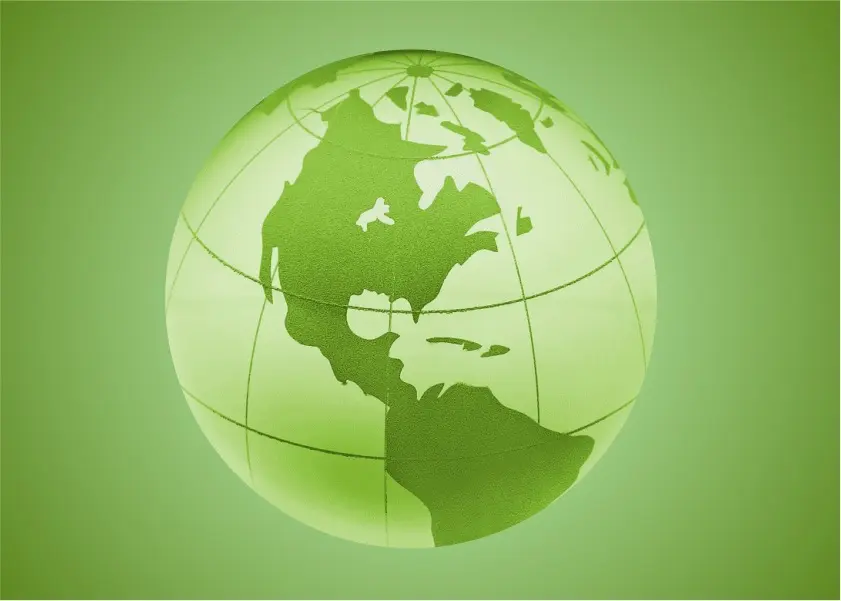Today, the non-profit Global Wellness Institute (GWI) released a comprehensive report addressing crucial queries about the wellness industry. This singular research provides insights into the size of the wellness market in each country, identifies the nations experiencing the fastest post-pandemic growth, examines per capita spending on wellness, and assesses the wellness market’s contribution to each country’s overall economy/GDP.
The Global Wellness Economy: Country Rankings presents a wealth of data, revealing that the United States remains the dominant force in wellness spending, boasting an annual market worth $1.8 trillion and securing the top rank in 9 out of 11 wellness sectors. Remarkably, nearly all of the top-25 wellness markets have demonstrated robust growth since the pandemic, with standout performers such as the UK, the Netherlands, the US, Mexico, Canada, and Australia surpassing their pre-pandemic market sizes by 120% or more. Globally, the wellness economy accounts for 5.6% of total GDP, signifying that approximately 1 in every 20 consumer dollars worldwide is spent on wellness.
In a comparative context, the research indicates that annual global per capita spending on wellness ($706) is comparable to consumer out-of-pocket spending on healthcare ($711). Notably, per capita wellness spending surpasses healthcare spending across all regions except North America. Additionally, wellness spending per capita exceeds expenditures on clothing/shoes ($289) and hotels/restaurants ($475) worldwide. Noteworthy cases include Switzerland, Iceland, and the US, where individuals spend an average of over $5,300 annually on wellness.
GWI’s senior research fellows, Ophelia Yeung and Katherine Johnston, emphasize the report’s significance for countries aspiring to grow their wellness economy. They highlight the need for nations to understand their position in this vast global industry and assess how their wellness markets have responded to the pandemic’s impacts.
The report serves as a companion to GWI’s 2023 Global Wellness Economy Monitor, offering a comprehensive update on all 11 wellness sectors. The global wellness economy is currently valued at $5.6 trillion, with a projected growth to $8.5 trillion by 2027.
For further details, the “Country Rankings” report can be downloaded here, accompanied by informative graphs.
Top 25 National Wellness Markets:
United States: $1.8 trillion (14% annual growth)
China: $790 billion (8.9%)
Germany: $269 billion (16.8%)
Japan: $241 billion (-3.9%)
UK: $224 billion (19.4%)
France: $172 billion (11.6%)
India: $132.5 billion (16.5%)
Canada: $128 billion (13.5%)
South Korea: $113 billion (9.4%)
Italy: $112 billion (7.9%)
Australia: $110 billion (12.9%)
Brazil: $96 billion (18.2%)
Russia: $94.5 billion (13.2%)
Spain: $83 billion (12.4%)
Mexico: $74 billion (25.2%)
Netherlands: $50 billion (12.1%)
Switzerland: $50 billion (14.5%)
Indonesia: $49 billion (5.9%)
Turkey: $45 billion (14%)
Taiwan: $43 billion (5.1%)
Austria: $42 billion (13.9%)
Philippines: $41 billion (8.9%)
Poland: $39 billion (11.1%)
Thailand: $35 billion (8.5%)
Sweden: $30 billion (7.5%)
The top five wellness markets globally are the US, China, Germany, Japan, and the UK, collectively representing 70% of the global wellness economy. The top 25 markets account for 86%, with the majority experiencing substantial recent growth. It’s crucial to note that currency depreciation impacts data for certain countries.
Wellness Spending Per Capita: Top 12 Countries:
Seychelles: $8,097
Switzerland: $5,737
Iceland: $5,523
Aruba: $5,361
United States: $5,321
Austria: $4,683
Australia: $4,218
Norway: $4,197
Denmark: $3,846
New Zealand: $3,689
UK: $3,342
Canada: $3,287
Unsurprisingly, the highest wellness spending is observed in affluent countries ranking in the top 25 for GDP per capita. Noteworthy growth in wellness spending per capita has been witnessed in the US and Switzerland from 2020 to 2022.
The report sheds light on unexpected leaders in wellness spending per capita, such as Seychelles and Aruba, which are prominent high-end wellness tourism destinations. These countries exhibit staggering impacts on their economies, with the wellness market contributing significantly, particularly from inbound wellness tourists.
The ratio of the wellness economy’s contribution to GDP is highest in North America (6.9%) and Europe (5.8%) and lowest in the Middle East-North Africa region (3.3%). Notable countries where wellness makes up a substantial percentage of GDP include the Philippines (10.1%), Austria (9%), the UK (7.3%), the US (7%), and South Korea (6.8%).
The research sponsors for this comprehensive study include BDMS Wellness Clinic, Conceptasia and Fukui Wellness Collaboration, Therme Group, Blueprint Global, The Philippines Department of Tourism, National Academy of Sports Medicine, The Singapore Tourism Board, AG7, and The Ministry of Tourism and Creative Economy, Republic of Indonesia.
The post Global Wellness Institute: Wellness spending matches healthcare globally appeared first on Travel And Tour World.






